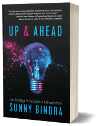Big Bad ‘B’: The BOLLYWOODIFICATION of our Lives
Bollywood: the world’s most energetic film industry. Every year, it churns out more than a thousand movies, sells more than 3 billion tickets and generates well over 1 billion dollars in revenue.
Bollywood: home of some of the greatest movies made anywhere in the world. Surendra Kumar, India’s current High Commissioner in Kenya, is a lifelong fan. He’s even written a book about it (Legends of Indian Cinema). Last year, he staged a festival at Nairobi’s Fox Cineplex at the Sarit Centre where the epics were shown: Pakeezah, Mughal-e-Azam, Sholay, Guide, Awaara and a glittering array of others. Guru Dutt’s Pyaasa, a personal favourite from 1955, is about a poet, Vijay, struggling to make any impact on a materialistic world. It contains some delightful lines. For example, when a magazine publisher throws Vijay out of his office:
Publisher: “If you are a poet, then I am a donkey!”
Vijay: “I would have recognised you, even if you hadn’t introduced yourself!”
But Mr. Kumar suffered the same fate as Vijay: he was casting pearls before swine. The festival attracted only a tiny band of loyal aficionados. The general Kenyan public, ignorant of greatness and proud of it, stayed away. The new Kenyan South Asians know what they like: an inauthentic chaat masala of sex, glamour and synthesized music.
Bollywood: producer of the world’s most idiotic story lines, hip-jerking gigolos, tear-jerking situations, and scantily clad damsels maintaining the facade of purity. A 24-hour production line, 99 per cent of whose outputs are garbage. But consumed voraciously all over the world by an adoring public.
This is not an old man’s lament about the passing of a generation, nor a nostalgia trip about the good old days. For one thing, I’m not that old (although watching today’s blockbusters makes me wish I was); for another, I know that much of what comes out of Bollywood has been bad for decades. The rot began when I was a boy in the ‘sensational seventies’ when films began being made especially for the stars of the day (Rajesh Khanna and Amitabh Bachchan, my childhood heroes); and plot, characterisation and nuance went out of the window. I may have adored them as a child, but films like Don, Naseeb and the like are difficult to watch now. The stars began straddling the screen, and directors decided that the mainstream adult audience had the intellectual and emotional development of a small child. Dumbing down began then, and we’re all dumber for it today.
Yet today’s Bollywood is undoubtedly extending the once-narrow boundaries of popular cinema. Mr. Kumar’s festival contained some notable newer films like Zubeida and Lekin. Genuinely innovative movies like Lagaan have taken us all the way to the Oscars. Black, which told the moving story of a deaf-and-blind girl being taught by a man sinking progressively into dementia, took us into uncharted territory. We’ve also had some rip-roaring comedies (Hera Pheri, Munnabhai MBBS) that brought a new freshness to an industry whose idea of humour was previously tied to the very stale facial twists of Johnny Lever and Govinda. And there appears to be a new market for literary adaptations: Devdas, Parineeta and Chokher Bali are all filmi versions of famous Indian novels. The results may be mannered, self-conscious and overdone, but there’s no denying the merit of popularising literature. More recently, movies like Bose: The Forgotten Hero and Mangal Pandey: The Rising are plugging a gap in popular understanding of Indian history.
Older films were technically very poor. The editing is immaculate these days, and the camerawork is world-class. The special effects are as spectacular as in any Hollywood blockbuster. The sets and costumes are lavish. The packaging, in other words, is outstanding. And the product inside, once you peel off the expensive wrapping? Make your way through the various silky layers: you will often find yourself holding a very small pea.
Shah Rukh Khan is the current colossus, the very self-conscious idol of millions. Virtually all the biggest box-office hits of recent years have had him heading the list of stars. But can you tell the roles apart? Is he in fact acting out any part other than that of Shah Rukh Khan in any of his hit movies? He is epitomising the defect that ailed Dev Anand, Rajesh Khanna and Amitabh Bachchan before him: of the star overwhelming the role. His every expression, every mannerism, every delivery is predictable. Can you distinguish SRK’s performances in KKHH, DTPH, K3G or KHNH? (Khan-lovers all know exactly what those abbreviations stand for. If you don’t, consider yourself blessed.) I haven’t seen him stretch a part since Dil Se in 1998. It may be great for the box office and great for his idol status, but it doesn’t extend the art of acting one tiny jot.
These new mega-movies display not the vaguest creativity. They merely tweak the ‘formula’: the family ruled with an iron fist by the famous patriarch (always Amitabh with a silver goatee and jet-black hair); the misunderstanding between father and son (always SRK doing his open-mouthed wounded look); the son’s love affair, thwarted by convention and misguided emotion, with a suitably lissom lass (insert heroine of choice here – Aishwarya, Rani, or Preety); the loving mother caught helplessly between the egos of father and son (always a star of yore – Jaya, Hema or Sharmila); the weepy climax in which Big B realises the error of his ways and embraces and reunites his scattered family.
Along the way, you will be regaled by music produced by one man and his synthesizer; stunning location shots, filmed in Australia, Austria and South Africa, with the silly pretence that we’re still in good old homely Bharat; an inane comedy thread provided by the aforementioned Lever (as a cab-driver or policeman); and literally thousands of extras in shimmering costumes who seem to come out of the woodwork on cue to dance like synchronised termites for the leading couple’s love duets. And of course the real money is in product placements these days, so you’ll get plenty of shots lingering on the stars’ soft-drink brands, their cars, watches, and shampoo brands. Like the colouring in Big B’s hair, the entire movie comes out of a tube.
And we’re plumbing new depths every year. These days, as globalisation opens up the awareness of the Indian public, the thing that sells is sex. And more sex. Seething sexuality is in every song, every picturisation. Actresses are in a race to the bottom to see who can take disrobing to a daring new low. It is as though we went through three millennia of civilisation without being aware of sex; we just can’t get enough of it on screen now. This is not just a men-exploiting-women thing: producers like Pooja Bhatt and actresses like Bipasha Basu are leading the charge to the lowest chakra. When the two combine in a movie (such as Jism), you will need to disinfect yourself when you get home.
But this is turning into an extended film review, which was not my intention. My concern isn’t really with the generally moronic content of popular Bollywood movies: you get what you pay for. I don’t have to watch them, after all, and generally don’t. There is, however, a more serious problem, which is the seeping of the Bollywood ethos into the daily lives of South Asians all over the world. It’s as though real life is now a forgotten memory, and the movie culture is the only real thing holding us all together.
I first became aware of this just before my wedding a few years ago, when all the shopkeepers in Nairobi insisted on trying to sell us bridal outfits identical to those worn by Kajol in Kuch Kuch Hota Hai. It was apparently what every young female was buying then. Walk around any Indian wedding these days and you will see it: all the young people are adorned in the ‘look’ popularised by Whoever in Whichever. The men pretending to look like Mughal princes in their elaborate ensembles with crinkled silk scarves and matching mojris; the women holding their breath throughout to keep their awkward bulges shoe-horned into a scanty dress designed more for the lithe charms of Miss Rai of Bollywood rather than the more ample footage of Mrs. Patel of Nairobi. All striving so hard to be something they patently are not.
It doesn’t end there. Little children are dressed in the same absurd outfits because of the ‘cute’ factor (“Doesn’t he look just like Salman in Lucky? So sweeeeet!”). Little girls are dressed in tarty bikini blouses and applauded when they swing their hips suggestively just like Madhuri’s courtesan in Devdas. Parents are apparently unable to see the mental damage of instilling flashy materialism, and an emphasis on the body, into their little children.
Bollywoodification is also assaulting our spiritual lives. I had the misfortune to be in a Nairobi mandir recently to witness once-sacred bhajans being sung to funky popular filmi tunes (with much applause from an enthusiastic audience, which was apparently revelling in the belief that it was there to be entertained rather than uplifted). A few days later, I was at a wedding where the traditional prayers were quickly followed up by someone singing saccharine film numbers (apparently to “bless” the couple in some bafflingly cheesy way) – and this, with the apparent approval of the priest, was done while the couple was still on the mandap. It seems people can’t even wait for the traditional drunken reception party in the hotel any more before getting into the real stuff – the hit songs of the day.
Centuries-old Sufi songs – uplifting, soul-stirring renditions of man’s undying love for his creator – are being pinched wholesale and plugged into metallic tunes, themselves lifted shamelessly from western pop numbers. But after their Bollywoodification, these songs are no longer about our search for meaning and eternal life – they could be picturised as some lovestruck teenager’s sexual yearning for the girl next door who exercises in leotards just to arouse him. Ye Gods. How the wisdom of the ages, so carefully crafted into words, has been bastardised into the chant of the love of sense objects. And the fans applaud heartily, thinking they have heard something vaguely more profound than the usual popcorn fare.
Bollywood at its best produces some of the best works of art and entertainment created by mankind. It provides direct or indirect employment to an estimated six million people. There is nothing wrong with movies per se; but there is everything wrong with our values as consumers of film fare. We are demanding the crass focus on crazed material consumption. We are asking that the sex scenes become ever more brazen and ever more explicit. We know these things are vapid and devoid of sense, but we want more. So more we get.
And who is it we are adoring? SRK and Big B probably are more important ‘leaders’, in terms of their effect on ordinary lives, than Manmohan Singh and Abdul Kalam, two very noble fellows actually worthy of emulation. But watch the star duo’s everyday behaviour. Both have lost the capacity to be anything other than their larger-than-life screen personas. Neither is able to stop performing, on screen or off. Both have amassed more fame and fortune than most people who have ever lived, yet you will still see their faces on billboards and magazine adverts, plugging biscuits or shirts or financial products. These are the high priests of Bollywood, our role models and exemplars.
That the civilisation that produced the Bhagavad Gita and the hymns contained in the Guru Granth Sahib is now focused on the wholesale marketing of sensuality is a tragedy I lack the words to record here. We were better than this.
Let’s leave Bollywood now, and go across the oceans to its even more corrupt role model, Hollywood. The Matrix movies are a global phenomenon, having generated US$ 1.6 billion at the box office across the world (which exceeds the annual revenue of the whole of Bollywood). The three movies are packed with the usual inane special effects, childish good-versus-evil battles and, of course, the requisite product placements. But they are different because of their unique plot premise. The central thesis is that all of what we perceive to be our reality – all our sensations, relationships, yearnings, losses – may be just one massive illusion. How? If machines took over the world long ago, and ‘harvested’ human beings by keeping us in special pods and extracting energy from us, how would they keep us quiet? Simply by feeding simulations directly into our brains. So we would experience pleasure, pain, tragedy, growth (all the things that make up ‘real’ lives) as though they were real. Yet it would be just an elaborate simulation created by a malevolent power for its own gain.
Far fetched, yes? Actually, no. The Matrix is one movie Bollywood has no reason to mimic, because Bollywood fans are already living it. All of our joys, rituals, tastes and aversions all come from one place. So does our sense of good and evil. A sophisticated machine is already producing all the make-believe that we take for real and inserting it directly into our daily thoughts and desires. Who needs science fiction? We’re already living deep in the Bollywood Matrix. And one of the revelations in the original Matrix story is that our seeming enslavement is an act of free will – we actually prefer the fake reality constructed by those who exploit us, to the harder task of thinking and acting for ourselves.
Interestingly, the idea of life as an intricate hoax is not new. The Matrix is based on the age-old Hindu idea of maya (illusion), which tells us that everything we construe as real on earth is just a perception, an output created by our brain processes. Our task is to see through the illusion and comprehend the underlying divine reality. Indeed, the final film in the series, Matrix Revolutions, ends with a Sanskrit chant (in the guise of a rock song), taken from the ancient Upanishads:
Asato ma sad gamaya
Tamaso ma jyotir gamaya
Mrtyor mamrtam gamaya
Om shaanti, shaanti, shaanti
Or, in English:
From delusion lead me to truth
From darkness lead me to light
From death lead me to immortality
Let peace prevail everywhere
If we could see through the canned and finely processed illusion thrown up by Bollywood, we might stand a chance of achieving a deeper enlightenment. But oh, no time for that – the newest, biggest, bestest blockbuster is in town. Must get tickets…

Buy Sunny Bindra's book
UP & AHEAD
here »











